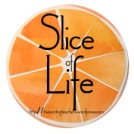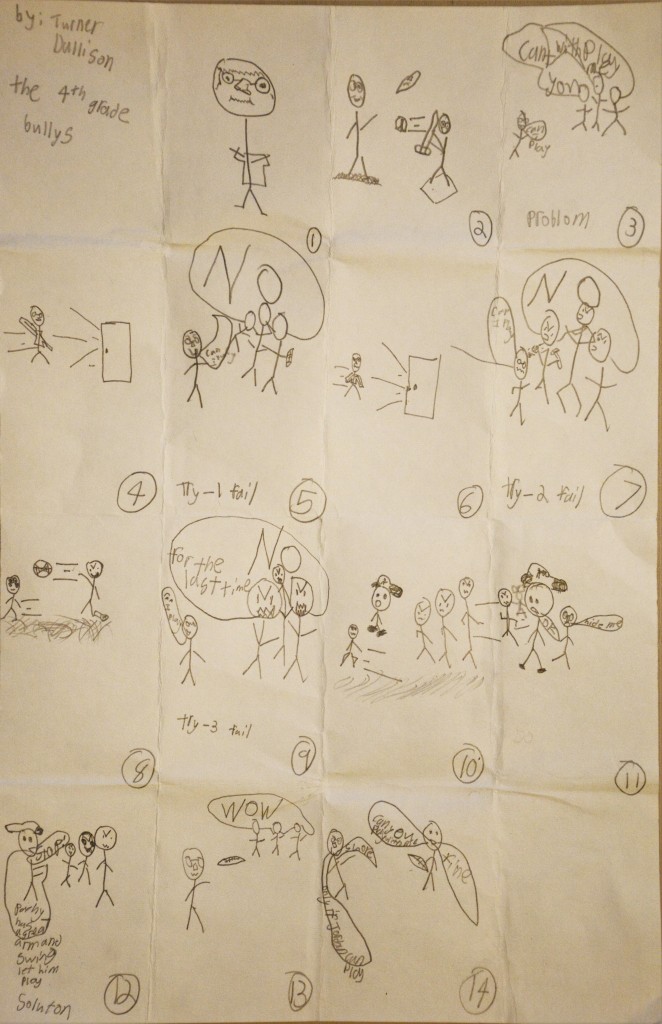 Many thanks to the twowritingteachers blog team for creating this wonderful community of writers. Slice of Life every March is challenging and rewarding. This year I hope to post on Tuesdays with the Slice of Life writers who continue to “hang out” together year round!
Many thanks to the twowritingteachers blog team for creating this wonderful community of writers. Slice of Life every March is challenging and rewarding. This year I hope to post on Tuesdays with the Slice of Life writers who continue to “hang out” together year round!
Once you hit on a great idea for a story, getting it in the right sequence is a helpful step. This is where the storyboard comes in. Television and movie makers as well as cartoonists use this method to create wonderful stories! This same strategy can work for kids, too!
Fold sheets of paper, work with a grid, or use sticky notes. After you read a picture book, ask the writing community to help you plot the story in storyboard form. Then find an idea for a story in your writer’s notebook as a web or brainstormed list. In front of your students, create a storyboard for it by using sketches to introduce the main characters and setting, the problem of your story, the actions that create your plot, and the resolution.
Teach your young writers to use stick figures to quickly show character movements and plot details. Use a pencil here – erasing is allowed! That way you can move things around and change them if necessary. Some students covered squares with sticky notes to revise frames or added notes to themselves such as “show not tell” or “explode this moment” to use as reminders while composing. Some writers change their storyboards during the writing process and others wait to make changes in their drafts.

The point is, writing is recursive, not linear. Writers can revise as early as the planning stage, or they can revise as they create their first drafts. Some writers like to get everything on paper before they begin to revise. There is no “correct” way because writing processes vary by individual writers. Each writer may adjust his process to fit the genre or form he is using. So it is possible to create very differently when you are writing an essay than when you are writing a poem.
The frames here are storyboards from third graders in Brenda Krupp’s class at Franconia Elementary School. They wrote individually and collaboratively to create narratives around social justice issues. The students began this journey by reading and discussing a text set of picture books of their choice (Brenda created about seven different sets for them) to provide some background and food for thought. These writers all agreed that they would use storyboarding again to help them plan their narratives.




I love story boards too. These examples from Brenda’s class show how useful they can be. Having little drawing ability myself, I recognize the importance of using stick figures, because it’s not the pictures, but what they represent that’s important. I like how your slice emphasizes the recursive nature of writing and that story boards are useful in helping to show student writers how details can be moved around as pieces are revised. Very useful.
LikeLiked by 1 person
I think that one of the hardest parts of writing for some students is to understand that things can be moved around.Storyboards give them this flexibility.
LikeLiked by 1 person
Yes, Bob. I agree with you! Storyboards provide a powerful option to plan narratives. You are so right about flexibility to move things around.
LikeLike
Great examples of storyboards. I need to show these photos to teachers so they can see the possibilities in storyboards. Great ideas Lynne!
LikeLiked by 1 person
Thanks so much, Elsie!
LikeLike
I love the story board idea! I never used them before, but great for planning a narrative! Will have to try this out in my classroom as we are going to be going into narrative in the next week or so.
LikeLiked by 1 person